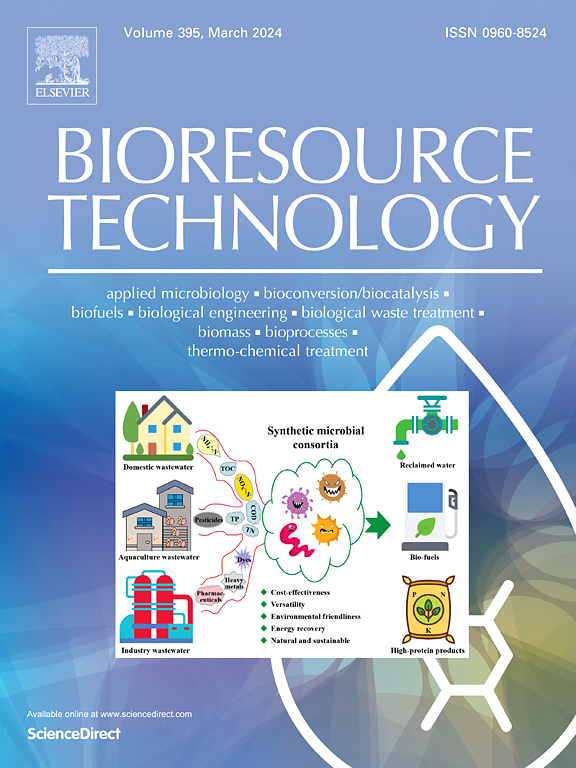Unlocking the effects of acid/alkali-catalyzed glycerol organosolv pretreatment on lignocellulosic biorefinery: Substrate digestibility and high-quality lignin
IF 9.7
1区 环境科学与生态学
Q1 AGRICULTURAL ENGINEERING
引用次数: 0
Abstract
This work systematically assessed three acid- or alkali-catalyzed glycerol (AGO/ALGO) pretreatments for lignocellulose fractionation into fermentable sugars and high-quality lignin. Results showed that compared with stand-alone process, catalyst-added pretreatments were more effective in delignification. AGO process had much higher hemicellulose removal selectivity than ALGO, resulting in a 32.7 % lower total sugar content in AGO solids compared to ALGO solids. It was also found that glyceryl lignin could increase cellulose hydrolysis yield, and ALGO lignin showed the highest improvement (35.9 %), which was beneficial to simplify the biorefinery route in the future. NMR analysis revealed that ALGO pretreatment was more favorable for lignin hydroxylation grafting reaction than AGO process, making recovered lignin have more β-O-4 linkages and aliphatic –OH groups. These results present pivotal insight into the design of organosolv pretreatment, aiming at platform sugar and lignin coproducts.

求助全文
约1分钟内获得全文
求助全文
来源期刊

Bioresource Technology
工程技术-能源与燃料
CiteScore
20.80
自引率
19.30%
发文量
2013
审稿时长
12 days
期刊介绍:
Bioresource Technology publishes original articles, review articles, case studies, and short communications covering the fundamentals, applications, and management of bioresource technology. The journal seeks to advance and disseminate knowledge across various areas related to biomass, biological waste treatment, bioenergy, biotransformations, bioresource systems analysis, and associated conversion or production technologies.
Topics include:
• Biofuels: liquid and gaseous biofuels production, modeling and economics
• Bioprocesses and bioproducts: biocatalysis and fermentations
• Biomass and feedstocks utilization: bioconversion of agro-industrial residues
• Environmental protection: biological waste treatment
• Thermochemical conversion of biomass: combustion, pyrolysis, gasification, catalysis.
 求助内容:
求助内容: 应助结果提醒方式:
应助结果提醒方式:


